Medical Revenue Cycle Management Service
What Is Revenue Cycle Management (RCM)?
Revenue cycle
management (RCM) is the process healthcare organizations use to manage
financial operations related to billing and collecting revenue for medical services. RCM begins when a patient schedules an appointment and ends when the
account balance is resolved through reconciliation of insurance payments,
contractual adjustments, write offs, or patient payments.
RCM helps
strengthen revenue by minimizing claim denials, reducing days in accounts
receivable, and increasing collections. As a result, healthcare providers
receive correct and timely payments and optimize financial performance.
Effective RCM also can help healthcare organizations comply with regulatory
requirements and improve patient satisfaction.
Steps for an Effective Revenue Cycle Include:
o Appointment scheduling: Determining the need for
services, along with collecting patient name, contact information, and
insurance coverage details.
o Registration: Completing patient intake, including insurance
verification, front-desk collections, and collecting patient demographics
o Charge capture for services: Assigning medical
procedure and diagnosis codes for the encounter
o Billing: Creating clean claims to receive reimbursement
from insurers and provide bills for patient.
o Denial management: Regularly reviewing denial reason codes to
determine why a claim was denied and making corrections to prevent denials in
the future.
o Accounts receivable (A/R) follow-up: Identifying and following up on unpaid charges.
Contact Us: https://www.flockbills.com/contact
Benefits of Healthcare RCM
RCM closes the
gap between the patient accounts side and clinical side of healthcare. For
instance, RCM links demographic data (patient’s name, insurance provider, and
other personal information) with the treatment a patient receives.
A well-designed
and proper RCM system streamlines the billing and collection cycles by
accurately preregistering, making appointments for, and scheduling patients;
collecting existing balances; processing payments; and questioning insurers
when they deny claims.
The healthcare
team (including providers, managers, and specialists in billing, coding, and
preauthorization) communicates using accounting systems and electronic health
records (EHRs). Using EHRs becomes easier with the help of RCM software or systems.
This streamlining improves the turnaround time associated with offering a
service and receiving payment for it, along with reducing administrative
overhead costs.
RCM systems
allow healthcare staff to enter all the information required for claims processing,
which helps prevent the need to revise or resubmit claims. Reducing denied
claims saves providers time and money.
RCM improves the
patient care process, creating a better experience for patients. For example,
through insurance eligibility verification, patients will know of any balance
or financial expectations from the beginning.
Accurate billing
and coding, as well as understanding the reason for denials, help improve the
patient experience through appropriate charging, which leads to fewer denials.
This accuracy leads to less stress for the patient and healthcare provider.
RCM systems
enable patients to pay their bills online, and healthcare providers can use RCM
systems for preserving and managing patients’ billing records.
RCM depends on documentation
to support the medical necessity behind the charge. Patient safety is improved
because the correct documentation leads to better overall quality of care for
the patient. Many clinicians review the patient’s chart to ensure clear
documentation, which provides a better overall picture of the patient problem.
RCM systems simplify reporting and analyzing data where necessary to verify that the revenue cycle is working and performing well within the organization.

